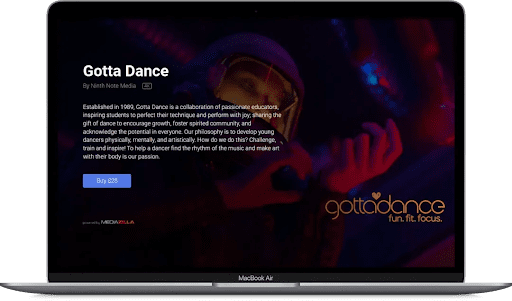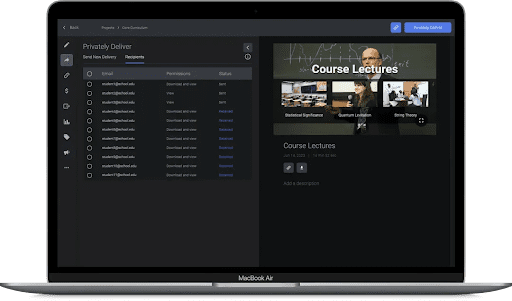In today’s digital era, the power of video content cannot be overstated. From educational tutorials to captivating storytelling, videos have become a primary medium for communication and entertainment across the globe.
For content creators, educators, documentarians, and filmmakers, monetizing video content presents a lucrative opportunity to reach wider audiences and generate revenue.
In this guide, we’ll explore the ins and outs of selling videos online, from choosing the right platform to implementing effective marketing strategies.
Why Sell Videos Online?
Before jumping into the specifics of selling videos online, it’s essential to understand why it’s a worthwhile endeavor for content creators:
- Global Reach: The internet offers unparalleled reach, allowing you to connect with audiences worldwide and expand your market reach beyond geographical boundaries.
- Monetization: Selling videos online provides a direct avenue for monetizing your content, enabling you to generate revenue from your creativity and expertise.
- Flexibility: Online video sales offer flexibility in pricing models, distribution channels, and content formats, allowing you to tailor your offerings to suit your audience’s preferences.
- Scalability: Digital distribution eliminates the limitations of physical inventory, allowing you to scale your business without constraints and reach unlimited customers.
- Instant Gratification: You can give your customers immediate access to the content so they can immediately start enjoying the content they have just paid for.
Now, let’s explore the essential steps involved in setting up your video sales operation.
Step 1: Optimize The Delivery Of Your Content
Some factors must be considered to leverage your professional content, and no, it’s not just the resolution of the video in 4K.
Consideration should be given to where your customers will view your content. If you are a learning content creator, they may view it on their computer or smart device.
For a social event such as a wedding, they may want to view the content with their family and friends on a large, high-resolution television.
Add chapters or markers within your videos to allow clients to easily navigate to specific sections. This is particularly useful for longer videos or educational content.
Encourage reviews and feedback to improve your content and customer experience continuously.
Use analytics tools to monitor sales, viewership, and customer engagement. There are a few great platforms that provide detailed analytics.
The additional or supporting materials you can provide to improve the results will have a big influence.
For example, if it is learning content, you can consider adding links to external sources or to a PDF manual.
On the other hand, for social events, add a photo album or even links to your own social networks to further promote yourself.
In this era, an important part of the customer experience is viewing your professional videos in the best possible resolution.
Ensure your videos are available in the highest quality possible, such as 4K resolution, with appropriate bitrate settings for smooth playback.
Invest in professional audio equipment and sound mixing to ensure the sound quality matches the high video standards.
It would be a shame to see your videos in Standard Definition (SD), 480p for example, when you put so much effort and dedication into recording and editing them.
On a big screen TV SD videos can often look pixelated and really diminish the viewing experience and possibly your credibility.
Step 2: Monetize Your Video Content
Have you considered which business model you should choose for selling your content?
As we know nowadays, popular video platforms like YouTube or social networks like TikTok allow you to monetize your videos by adding commercials.
This model is called AVOD (Advertising-Based Video On Demand).
Platforms like Netflix, a monthly subscription for access to content, is known as SVOD (Subscription Video On Demand).
There is also the model where you sell your video, and the customer pays a one-time fee for access to the content. This model is known as TVOD (Transaction Video-On-Demand).
But which is the best model? The answer will depend on the content you distribute and your audience.
For example:
- If you are selling content that will be continuously updated, the SVOD model might be the most suitable.
- If you are selling educational content, such as tutorials or social events, the TVOD model could be ideal.
- If you aim to reach a broader audience without charging upfront, the AVOD model, where revenue is generated through advertising, might be the best choice.
Step 3: Choosing The Right Platform
Selecting the right platform to host and distribute your videos is crucial for success in the online video marketplace. Here are some key factors to consider:
- Ease of Use: Look for platforms with intuitive interfaces and user-friendly tools for uploading, organizing, and selling your videos, that will help you create the best viewing experience.
- Customization Options: Choose platforms that offer customization options for your storefront, pricing, and distribution settings, allowing you to maintain brand consistency and control over your content.
- Security Features: Ensure the platform prioritizes content security and offers robust measures to protect your videos from piracy and unauthorized access.
- Viewing Experience: The viewing experience is almost always overlooked. A smooth, high-quality viewing experience ensures that your audience enjoys your content without interruptions. This can lead to higher satisfaction and positive reviews.
- Monetization options: Select a platform that provides different payment methods and supports growing your business. One of the most powerful strategies today is leveraging upsells to boost your revenue. By offering related products or services, you can enhance customer value and maximize each transaction’s profitability.
One such platform that meets all these criteria is MediaZilla.
Step 4: Getting Started With Selling Videos Online
Getting started with selling videos online involves the following steps:
- Sign Up: Create an account on your chosen platform and explore its features and capabilities.
- Upload Your Videos: Upload your videos to the platform’s secure servers and organize them into projects or presentations.
- Customize Your Video Presentation: Personalize your video presentation with your branding elements and set up your pricing and distribution preferences.
- Promote Your Content: To promote your videos and reach a wider audience, utilize a mix of marketing channels, including social media, email marketing, and content partnerships.
- Engage with Your Audience: Foster a sense of community around your brand by engaging with your audience through comments, discussions, and interactive content.
Step 5: Maximizing Your Sales Potential
To maximize your sales potential, consider the following strategies:
1. Create High-Quality Content
Focus on creating compelling and valuable content that resonates with your target audience and sets you apart from the competition.
Pay close attention to production value, as high-quality visuals and audio are crucial in attracting and retaining viewers, ensuring a professional and polished final product.
2. Implement Effective Marketing Strategies
Utilize data-driven marketing strategies to target your audience effectively and drive sales.
For example, leverage social media advertising to reach specific demographics interested in your content, or utilize email marketing campaigns to nurture leads and encourage repeat purchases.
By analyzing customer data and market trends, you can tailor your marketing efforts for maximum impact and return on investment.
3. Leverage Analytics
Use analytics data to gain insights into your audience’s preferences and behavior, allowing you to refine your offerings and marketing strategies accordingly.
Track conversion rates and customer journey paths to optimize your sales funnel and improve overall conversion rates.
These insights can help you make data-driven decisions that lead to more effective content delivery and increased sales.
4. Upsell strategy
This is a strategy that is often overlooked by content creators. You can give your customers access to the content they requested and give them the opportunity to unlock more content as they become more interested. Here is an example of how you can achieve this.
Wrapping Up
Selling videos online presents a significant opportunity for content creators and businesses to monetize their creativity and expertise.
It’s not just about creating great content; it’s also about strategically delivering it to your audience in a way that maximizes sales potential.
By carefully selecting the right platform to host and distribute your videos, implementing effective marketing strategies tailored to your target audience, and developing a suitable business model, you can unlock the full potential of your video sales endeavor.
Ready to embark on your journey to online video sales success? Consider partnering with a trusted platform like MediaZilla.
With their comprehensive suite of tools and expertise in content delivery and sales, MediaZilla can provide the support and guidance you need to succeed in the competitive online video marketplace.
Whether you’re a seasoned filmmaker or a budding entrepreneur, MediaZilla offers personalized solutions to help you maximize your revenue and build a thriving online business.
Visit their website today to learn more and schedule a free consultation to discuss how they can help you achieve your video sales goals.
The Art of Selling Videos Online: A Comprehensive 5 Step Guide









